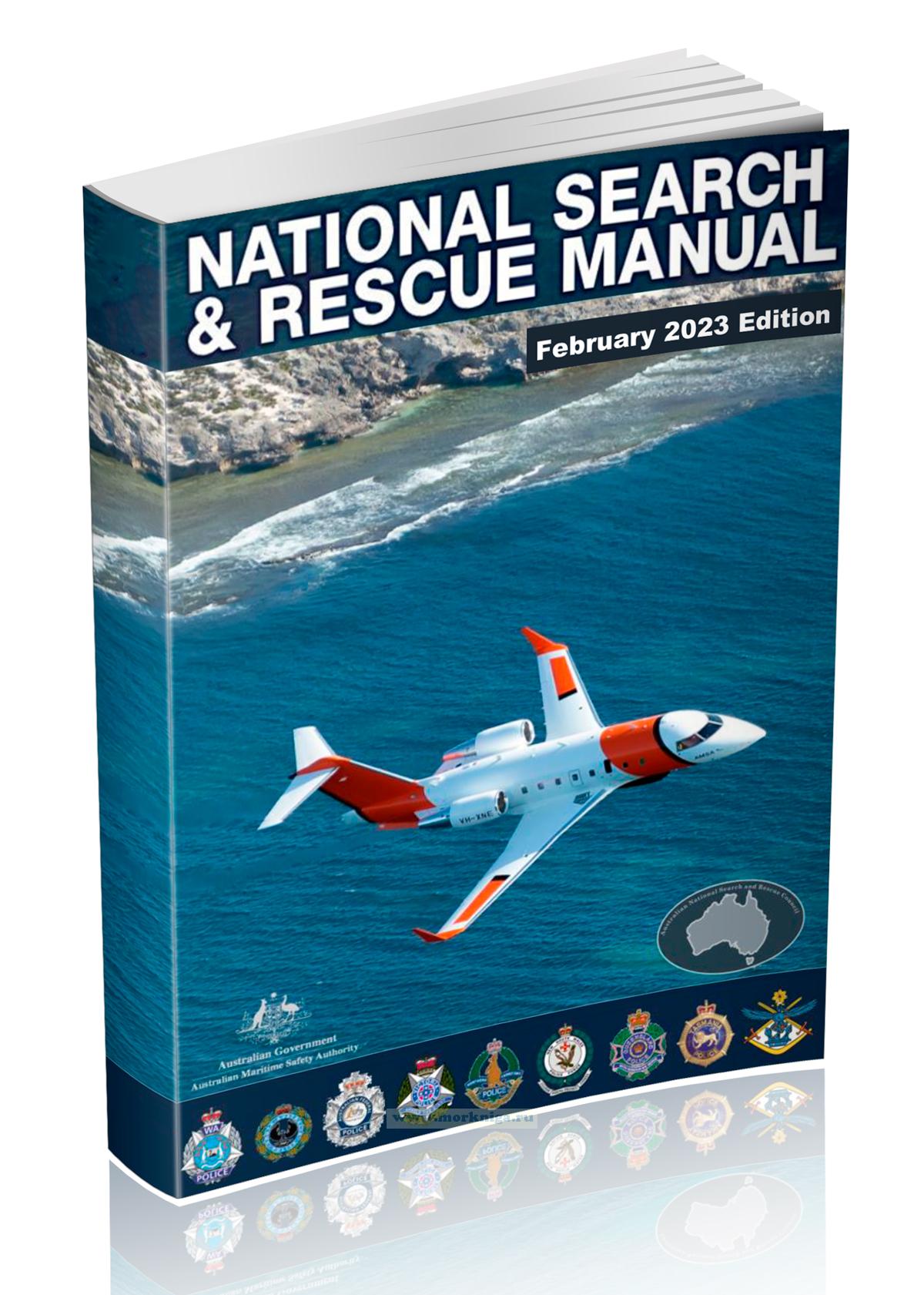National Search and Rescue Manual/Национальное руководство по поиску и спасанию
Издание на английском языке
The book is dedicated to organizing search and rescue operations in Australia, describing their importance in helping people in danger. She is considering the collaboration of various services, such as maritime safety and police, to effectively respond to emergencies in Australia's vast search and rescue area. The book also highlights the need to standardize procedures and coordinate actions to improve the effectiveness of rescue operations and save lives.
Contents
Foreword
Introduction
Defence Letter of Promulgation
Table of Contents
Index
Acronyms and Abbreviations
Glossary
Volume 1 - Search and Rescue Administration
Chapter 1 SAR System Organisation
1.1 Organisation
1.2 SAR Coordination
1.3 Requesting State / Territory SAR Authority Assistance
1.4 Australian Search and Rescue Region
1.5 SRR Coordinates
1.6 Australian States and Land Search Area
Chapter 2 SAR Management
2.1 Overview
2.2 Search and Rescue Resources
2.3 Public Relations
2.4 Other Emergency Assistance and Services available from JRCC Australia
Chapter 3 Training and Exercises
3.1 Requirements for SAR Training
3.2 National Training Framework
3.3 Search and Rescue Exercises
3.4 Training of Search and Rescue Assets
3.5 Photographic Records
3.6 Liaison Visits
Volume 2 - Search and Rescue Operations
Chapter 1 Communications
1.1 Aviation and Maritime
1.2 Distress and Emergency Signals
1.3 Global Maritime Distress and Safety System (GMDSS)
1.4 Emergency Signalling Devices
1.5 COSPAS-SARSAT Distress Beacon Detection System
1.6 Other Types of Distress Alerting Devices
1.7 SAR RADAR Transponder (SART)
1.8 Communications in Support of SAR Operations
1.9 Communications Facilities
1.10 Land Search Communications
1.11 Communications
1.12 Communications Officer
1.13 Communication Requirements
1.14 Headquarter Requirements
1.15 Telephone/Radio
1.16 Rear Net
1.17 Forward Net
1.18 Frequencies
1.19 Radios in general
1.20 Procedures and Practices
1.21 Other Methods of Communications
Chapter 2 Awareness and Initial Action
2.1 Awareness Introduction
2.2 Types of SAR Incidents
2.3 Recording of Events
2.4 SAR Stages
2.5 Awareness and Initial Action Stages (Stage 1 and 2)
2.6 Emergency Phases
2.7 Initial Action: Procedures of the Emergency Phases
2.8 Intelligence Gathering and Assessment
Chapter 3 Search Planning and Evaluation
3.1 Aviation and Maritime Search Planning
3.2 Aviation and Maritime Search Planning Steps
3.3 Search Response Stages
3.4 Aviation and Maritime Basic Search Planning
3.5 Aviation and Maritime Determination of Search Areas
3.6 Coastal Search Planning
3.7 Land Search Planning
3.8 Incident Command
3.9 Situational Awareness
3.10 Conducting an Appreciation
3.11 Courses Open
3.12 Terrain Factors
3.13 Land Environments
3.14 Formal Search (Land)
3.15 Subjective/Decision Point Strategy (Land)
3.16 Deductive Strategy (Land)
3.17 Recording of search areas (Land)
Chapter 4 Search and Rescue Techniques
4.1 Aviation and Maritime Search Operations
4.2 General Guidelines for Searches
4.3 Aviation and Maritime Search Area Coverage
4.4 Navigation of SAR Assets (Aviation and Maritime)
4.5 Visual Search Patterns (Aviation and Maritime)
4.6 Flare Searches
4.7 Electronic Searches
4.8 Aviation and Maritime SAR Asset Selection and Characteristics
4.9 Aviation and Maritime Search Asset Allocation
4.10 SAR Crew Briefing
4.11 SAR Crew Debriefing
4.12 Land Search Operations
4.13 Land Search Assets
4.14 Land Search Area Coverage
4.15 Land Search Patterns
4.16 Clue Recognition and Interpretation
4.17 Land Search Briefings
Chapter 5 Rescue Planning Operations
5.1 Rescue General
5.2 Medical Assistance
5.3 Aircraft Accidents
5.4 Land Rescue
5.5 Maritime Rescue
5.6 Rescue Assets
5.7 Supply Dropping and Delivery of Survival Equipment
Chapter 6 i Conclusion of SAR Operations
6.1 Conclusion General
6.2 Conclusion of a successful SAR operation
6.3 Suspension/termination of a search when the target is not found
6.4 Reopening a Suspended Search
6.5 Records and Reports
6.6 Incident Debriefs
6.7 Case Studies
6.8 Peer Reviews
Chapter 7 ' Medical Factors
7.1 General
7.2 Time Frame for Survival (TFFS)
7.3 Survivor Stress Factors
7.4 Survival Environment Factors
7.5 Hypothermia
7.6 Water Hypothermia
7.7 Wind Hypothermia
7.8 Wind Chill
7.9 Hypothermia Survivability
7.10 Wet-Chill Survivability
7.11 Water Immersion
7.12 Effects of Alcohol
7.13 Hyperthermia, Heat Stress and Dehydration
7.14 Heat Exhaustion
7.15 Heat Stroke
7.16 Hyperthermia Survivability
7.17 Terrain Factors
7.18 Seeking Medical Advice
Appendix A - Intergovernmental Agreement
Appendix B - National SAR Responsibilities
Appendix C - National Operational Procedure for Transfer of Coordination
Appendix D-1 Distress Emergency Signals
Appendix D-2 Maritime SAR Recognition Code (MAREC)
Appendix D-3 Plotting Symbols
Appendix D-4 Sighting and Hearing (SHR) Techniques
Appendix D-5 Tables and Graphs
Appendix D-6 Probable Errors of Position
Appendix D-7 Maritime and Aviation Worksheets
Appendix D-8 Aircraft Accident Site Precautions
Appendix D-9 Civil Aircraft Search and Rescue Assets (SRAs)
Appendix D-10 Coastal Datum Search and Rescue Planning
Appendix E-1 Search Urgency Assessment Form
Appendix E-2 Missing Person Questionnaire
Appendix E-3 Object Questionnaire
Appendix E-4 Land SAR Checklist
Appendix E-5 Lost Person Behaviour
Appendix E-6 Land Search Planning Tables
Appendix E-7 Additions to Naismith's Rule
Appendix E-8 Land SAR Probability of Detection (Land)
Appendix E-9 Mattson Consensus
Appendix E-10 Land Search Organisation Chart Example
Appendix E-11 Field Search Headquarters Layout Example
Appendix E-12 Search Communications Network Example
Appendix E-13 Clue Recognition
Appendix E-14 SAR Tasking Sheet Example
Appendix E-15 Search for Skeletal Remains
Bone characteristics
Plant growth on bones
Predator damage to bones
Appendix E-16 Peer Review Form Example
Appendix E-17 Body Flotation Information
Appendix F - Aircraft Electronic Night Search Guidance

